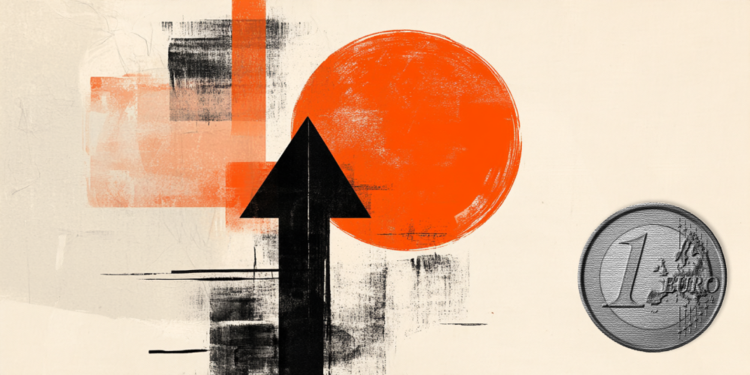At a Glance
- The EUR/CHF exchange rate is trading around 0.9240, showing a modest recovery after touching an 11-month low.
- The European Central Bank (ECB) is expected to maintain its key interest rate at 2.00% through 2027, according to a Reuters poll.
- ECB Vice President Luis de Guindos stated that current interest rates are adequate and officials are satisfied with the monetary policy stance.
- The Swiss National Bank (SNB) also maintains its policy rate at 0.00%, with inflation expected to rise slightly in coming quarters.
- Potential US tariffs on pharmaceuticals could pose downside risks to Switzerland’s export-driven economy.
EUR/CHF Currency Pair Rebounds
The Euro (EUR) is showing stability against the Swiss Franc (CHF) on Wednesday, regaining ground after a brief dip to an 11-month low near 0.9205 recorded on Tuesday. At the time of this report, the EUR/CHF pair is trading around 0.9240, indicating a mild technical rebound from oversold conditions.
ECB Expected to Hold Rates Amid Stable Outlook
This recovery is occurring as market participants analyze a Reuters poll suggesting the European Central Bank (ECB) is likely to keep its benchmark interest rate at 2.00% until at least 2027. This forecast aligns with expectations of a stable inflation outlook and steady growth prospects within the Eurozone.
Economists participating in the survey anticipate Eurozone Gross Domestic Product (GDP) growth of approximately 1.2% for 2025, with inflation projected to remain close to 2.2%. These predictions suggest a confidence among policymakers that current monetary policy settings are sufficiently restrictive to manage price stability.
💡 The stable outlook provides a degree of support for the Euro, which has experienced consistent downward pressure countered by a strong Swiss Franc and a generally cautious market sentiment.
ECB and SNB Maintain Cautious Monetary Stance
ECB Vice President Luis de Guindos commented earlier today, asserting that the current level of interest rates is “adequate” and that ECB officials are “satisfied” with the prevailing borrowing cost. He highlighted that inflation risks are balanced and that the Governing Council will continue to make decisions on a meeting-by-meeting basis.
These remarks reinforce the view that the ECB is in a holding pattern, with no immediate plans to alter interest rates in either direction.
Across the border, the Swiss National Bank (SNB) is adopting a similarly cautious approach. Following its September meeting, the SNB maintained its policy rate at 0.00%, reiterating that existing conditions are appropriate for preserving price stability. SNB Chair Martin Schlegel noted in recent statements that inflation is expected to see a slight increase in the upcoming quarters and that the central bank will closely monitor the situation, adjusting monetary policy as needed.
⚡ Schlegel also pointed out that proposed U.S. tariffs on certain pharmaceutical products could introduce downside risks for Switzerland’s economy, which is heavily reliant on exports.
Understanding the European Central Bank (ECB)
The European Central Bank (ECB), headquartered in Frankfurt, Germany, serves as the central bank for the Eurozone. Its primary responsibilities include setting interest rates and managing monetary policy for the region’s member states.
The ECB’s core mandate is to maintain price stability, which translates to keeping inflation around the 2% target. The primary instrument used to achieve this objective is the adjustment of interest rates; higher interest rates typically strengthen the Euro, while lower rates tend to weaken it.
The ECB’s Governing Council convenes eight times a year to make monetary policy decisions. These decisions are made collectively by the heads of the Eurozone’s national central banks and six permanent members, including the ECB President, Christine Lagarde.
ECB’s Tools: Quantitative Easing and Tightening
In exceptional circumstances, the ECB can implement a policy known as Quantitative Easing (QE). QE involves the ECB creating new Euros to purchase assets, predominantly government or corporate bonds, from banks and other financial institutions. This policy typically leads to a depreciation of the Euro.
QE is generally considered a last resort, employed when reducing interest rates alone is deemed insufficient to achieve the goal of price stability. The ECB utilized QE during the Great Financial Crisis (2009-2011), in 2015 amid persistent low inflation, and again during the COVID-19 pandemic.
Quantitative Tightening (QT) is the inverse of QE. It is typically introduced after a period of QE, when an economic recovery is established and inflation begins to rise. While QE involves the ECB buying bonds to inject liquidity, QT entails the ECB ceasing bond purchases and not reinvesting the principal from maturing bonds it already holds. This process is generally considered positive (bullish) for the Euro.
Conclusion
The EUR/CHF pair is experiencing a slight uplift as central banks in the Eurozone and Switzerland maintain their current monetary policy stances. While the ECB and SNB are holding steady, potential geopolitical trade developments could influence future economic outlooks for Switzerland.

